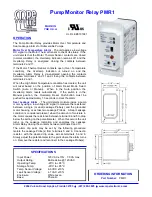
Publication 700-AT001A-EN-E June 2002
Considerations When Designing SSR Control Systems
2-9
7UDQVIRUPHU/RDG
When the SSR is switched ON, an energizing current of 10…20 times
the rated current flows through the SSR for 10…500 milliseconds. If
there is no load in the secondary circuit of the transformer, the
energizing current will reach the maximum value. Select an SSR so
that the energizing current does not exceed half the inrush current
resistance of the SSR (Refer to page 2-7).
+DOIZDYH5HFWLILHG&LUFXLW
Some AC electromagnetic counters and solenoids have built-in diodes,
which act as half-wave rectifiers. For these types of loads, a half-wave
AC voltage does not reach the SSR output. For SSRs with the zero
cross function, this can cause them not to turn ON. Two methods for
counteracting this problem are described below.
(a) Connect a bleeder resistance with approximately 20% of the SSR load current.
(b) Use SSRs without the zero cross function.
)XOOZDYH5HFWLILHG/RDGV
Some AC electromagnetic counters and solenoids have built-in diodes
which act as full-wave rectifiers. The load current for these types of
loads has a rectangular wave pattern, as shown in the diagram below.
Accordingly, AC SSRs use a triac (which turns OFF the element only
when the circuit current is 0 A) in the output element. If the load
current waveform is rectangular, it will result in a SSR reset error.
Therefore, do not use with SSRs with full-wave rectified loads. When
Bleeder resistance
Load
Load Diode
Circuit current
wave pattern
Load
















































